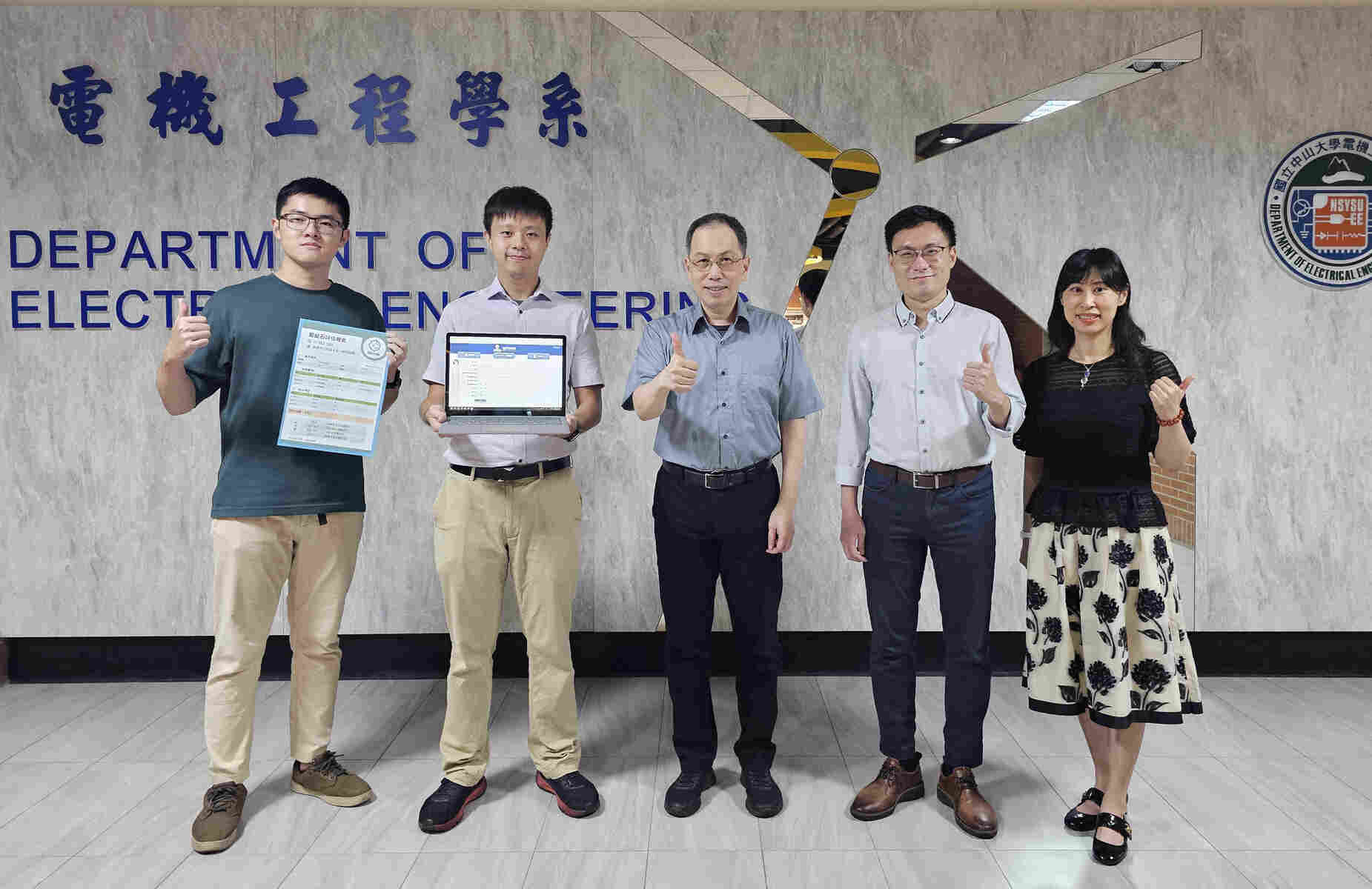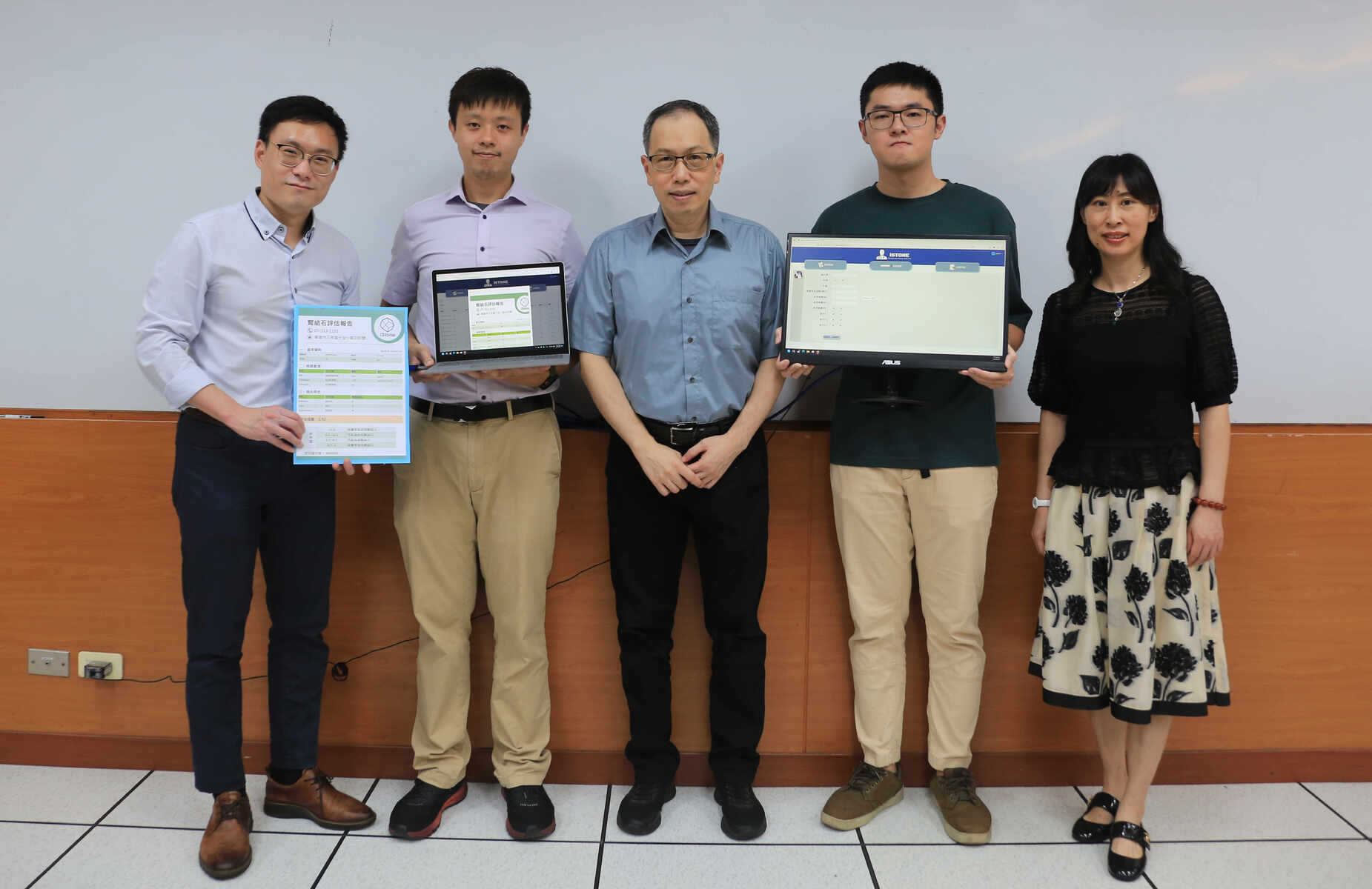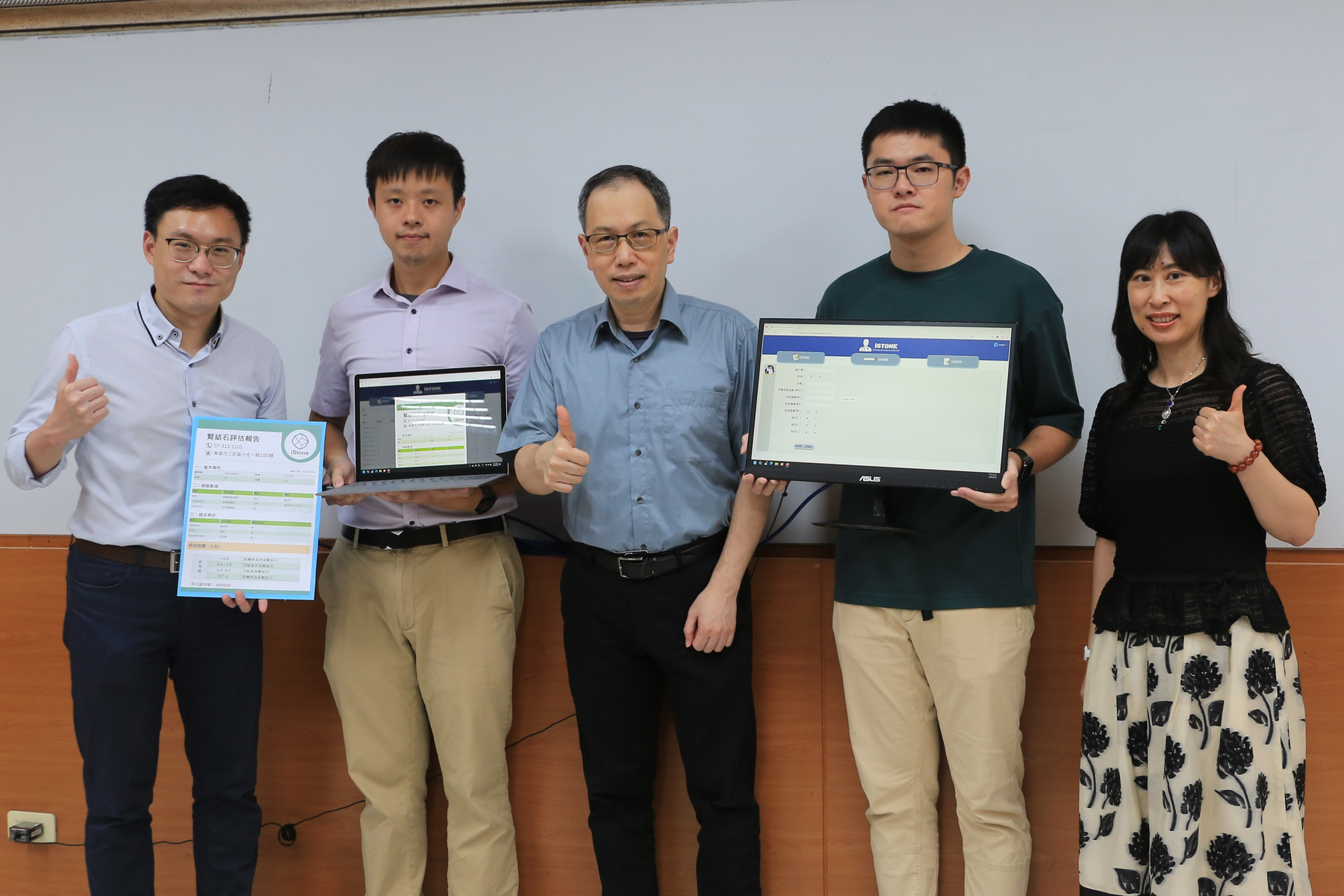NSYSU collaborated with KMU to develop the Surgery-Free AI Uric Acid Stone Prognostic System



2023-10-31
The cross-school, cross-disciplinary research team composed of researchers from National Sun Yat-sen University (NSYSU) and Kaohsiung Medical University (KMU) announced the innovative study results for kidney stones treatment, the “Surgery-Free Artificial Intelligence (AI) Uric Acid Stone Prognostic System”. This innovative system enables an efficient and speedy precision treatment for uric acid stones patients. It takes only a few seconds to identify the components of uric acid stones, which helps doctors identify patients who should receive pharmaceutical therapy instead of invasive surgery. This system was demonstrated in the 2023 Medical Taiwan International Medical, Health & Care Expo. The research team has been awarded the first prize in a creative entrepreneurship competition. The system is anticipated to proceed to the stage of commercial launch.
The research team specified the system’s efficiency and convenience. It utilizes patients’ physiological data and AI techniques for analysis. The inspection report can be accomplished within one second. It can quickly identify uric acid stones neither by invasive inspection nor X-ray inspection. There is no concern about the radiation effects caused by X-rays. The system is anticipated to save TWD 450 million in medical payments for the National Health Insurance (NHI).
The “Surgery-Free AI Uric Acid Stone Prognostic System” was developed by the cross-school, cross-disciplinary research team that was led by Dr. Chung-Yao Kao, a Professor of the Department of Electrical Engineering at NSYSU, and Dr. Hao-Wei Chen of the Department of Urology at KMU. The team members include Dr. Jung-Ting Lee, the assistant research fellow of NSYSU’s School of Medicine, and Pei-Siou Wei, a PhD Student at NSYSU’s Department of Electrical Engineering. Professor Kao indicated that the prediction model was established by machine learning methodology. Using basic clinical parameters obtained from routine urine and blood examinations, uric acid stones in kidney stones can be identified with an accuracy of nearly 90%. This system demonstrates a convenient and reliable method to distinguish uric acid stones from other stones before treatment, allowing for precise and symptomatic treatment.
Dr. Hao-Wei Chen indicated that according to medical statistics, the worldwide prevalence of kidney stones was 10%, which represents 650 million people who were undergoing various kidney stones situations, such as acute flank pain, bleeding in urine, sepsis, and hemodialysis treatment that causes impact on life. In Taiwan, the annual NHI payment for kidney stone treatment has achieved TWD 3 billion, causing a financial burden for the country. Common treatments for kidney stones include shock wave lithotripsy and surgery. However, 15% of patients with uric acid stones can be dissolved by taking medicine, and expensive and harmful surgery is unnecessary. Doctors usually identify the uric acid stones situations merely based on their experiences. The composition of the stones can only be confirmed after surgery. This results in many unnecessary surgeries and a waste of time and money.
The "Surgery-Free AI Uric Acid Stone Prognostic System" provides simple, fast, and accurate classification testing for patients with kidney and other upper urinary tract stones, assisting doctors in diagnosis and treatment. This system is sponsored by the National Science and Technology Council’s research grant and cooperation projects conducted by NSYSU and KMU. It has been awarded with many innovative and creative entrepreneurship competitions. It has now completed the construction of the AI module system, and the research and development results have been published in international journals and have applied for Taiwan and US patents. It is planned to continue clinical trials, medical device licenses, promotion and exhibition participation, and regulations evaluation in the future. The commercial launch of the system is expected to create a new way for kidney stone treatment.
The cross-school, cross-disciplinary research team composed of researchers from National Sun Yat-sen University (NSYSU) and Kaohsiung Medical University (KMU) announced the innovative study results for kidney stones treatment, the “Surgery-Free Artificial Intelligence (AI) Uric Acid Stone Prognostic System”. This innovative system enables an efficient and speedy precision treatment for uric acid stones patients. It takes only a few seconds to identify the components of uric acid stones, which helps doctors identify patients who should receive pharmaceutical therapy instead of invasive surgery. This system was demonstrated in the 2023 Medical Taiwan International Medical, Health & Care Expo. The research team has been awarded the first prize in a creative entrepreneurship competition. The system is anticipated to proceed to the stage of commercial launch.
The research team specified the system’s efficiency and convenience. It utilizes patients’ physiological data and AI techniques for analysis. The inspection report can be accomplished within one second. It can quickly identify uric acid stones neither by invasive inspection nor X-ray inspection. There is no concern about the radiation effects caused by X-rays. The system is anticipated to save TWD 450 million in medical payments for the National Health Insurance (NHI).
The “Surgery-Free AI Uric Acid Stone Prognostic System” was developed by the cross-school, cross-disciplinary research team that was led by Dr. Chung-Yao Kao, a Professor of the Department of Electrical Engineering at NSYSU, and Dr. Hao-Wei Chen of the Department of Urology at KMU. The team members include Dr. Jung-Ting Lee, the assistant research fellow of NSYSU’s School of Medicine, and Pei-Siou Wei, a PhD Student at NSYSU’s Department of Electrical Engineering. Professor Kao indicated that the prediction model was established by machine learning methodology. Using basic clinical parameters obtained from routine urine and blood examinations, uric acid stones in kidney stones can be identified with an accuracy of nearly 90%. This system demonstrates a convenient and reliable method to distinguish uric acid stones from other stones before treatment, allowing for precise and symptomatic treatment.
Dr. Hao-Wei Chen indicated that according to medical statistics, the worldwide prevalence of kidney stones was 10%, which represents 650 million people who were undergoing various kidney stones situations, such as acute flank pain, bleeding in urine, sepsis, and hemodialysis treatment that causes impact on life. In Taiwan, the annual NHI payment for kidney stone treatment has achieved TWD 3 billion, causing a financial burden for the country. Common treatments for kidney stones include shock wave lithotripsy and surgery. However, 15% of patients with uric acid stones can be dissolved by taking medicine, and expensive and harmful surgery is unnecessary. Doctors usually identify the uric acid stones situations merely based on their experiences. The composition of the stones can only be confirmed after surgery. This results in many unnecessary surgeries and a waste of time and money.
The "Surgery-Free AI Uric Acid Stone Prognostic System" provides simple, fast, and accurate classification testing for patients with kidney and other upper urinary tract stones, assisting doctors in diagnosis and treatment. This system is sponsored by the National Science and Technology Council’s research grant and cooperation projects conducted by NSYSU and KMU. It has been awarded with many innovative and creative entrepreneurship competitions. It has now completed the construction of the AI module system, and the research and development results have been published in international journals and have applied for Taiwan and US patents. It is planned to continue clinical trials, medical device licenses, promotion and exhibition participation, and regulations evaluation in the future. The commercial launch of the system is expected to create a new way for kidney stone treatment.
Click Num:
Share
